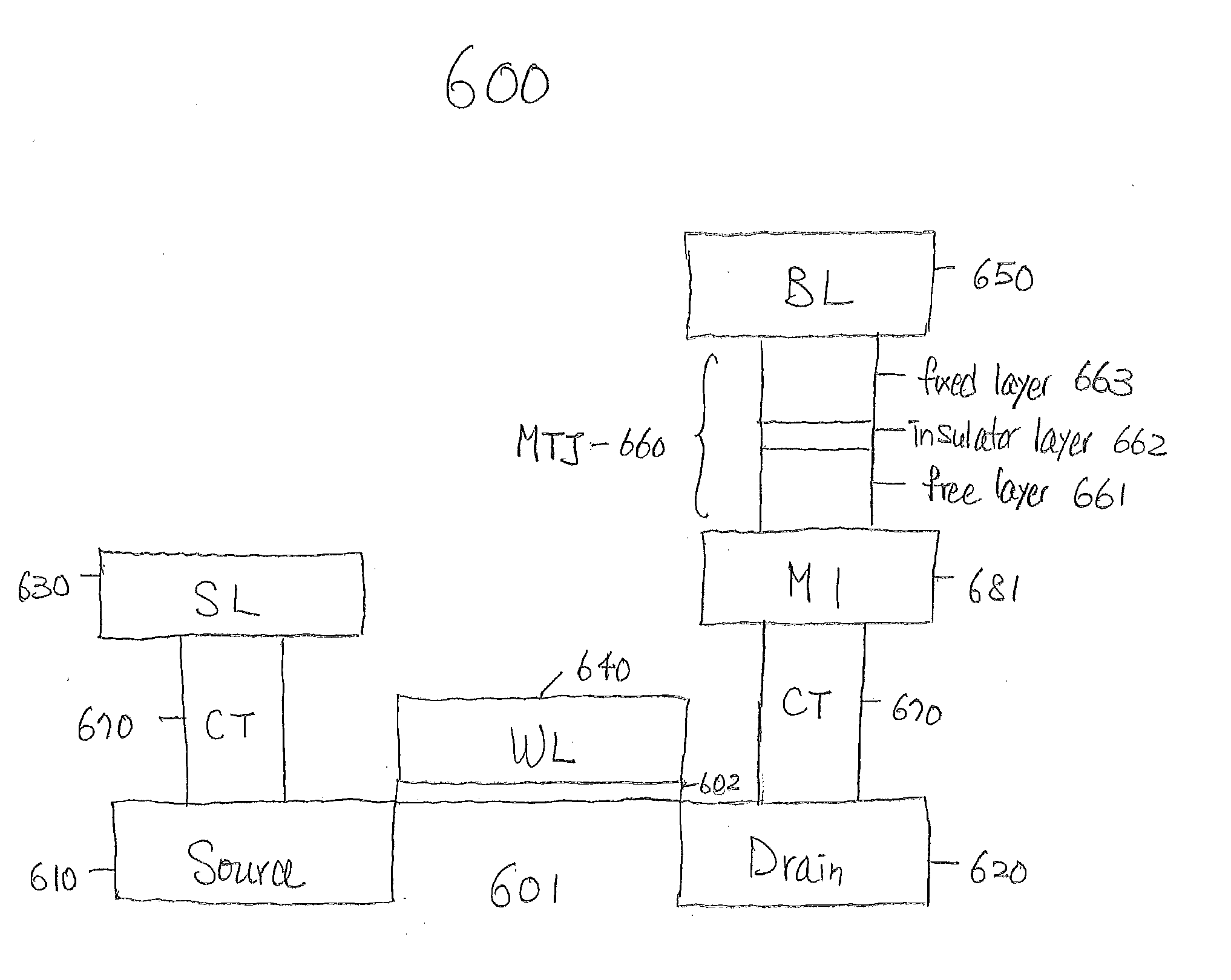Reverse connection mtj cell for stt MRAM
a mtj cell and reverse connection technology, applied in semiconductor devices, digital storage, instruments, etc., can solve the problem of limited parallel-to-anti-parallel switching current in large numbers
- Summary
- Abstract
- Description
- Claims
- Application Information
AI Technical Summary
Benefits of technology
Problems solved by technology
Method used
Image
Examples
Embodiment Construction
The present disclosure relates to a MTJ cell of a MRAM that is not limited by the source degeneration effect when switching the magnetization direction of the MTJ cell. It is understood that the present disclosure provides many different forms and embodiments, and that specific embodiments are provided only as examples. Further, the scope of the present disclosure will only be defined by the appended claims. In the drawings, the sizes and relative sizes of layers and regions may be exaggerated for clarity. It will be understood that when an element or layer is referred to as being “on,”“connected to” or “coupled to” another element or layer, it may be directly on, connected to, or coupled to the other element or layer, or intervening elements or layers may be present.
Spatially relative terms, such as “beneath,”“below,”“lower,”“above,”“upper” and the like, may be used herein for ease of description to describe one element or feature's relationship to another element(s) or feature(s) ...
PUM
 Login to View More
Login to View More Abstract
Description
Claims
Application Information
 Login to View More
Login to View More - R&D
- Intellectual Property
- Life Sciences
- Materials
- Tech Scout
- Unparalleled Data Quality
- Higher Quality Content
- 60% Fewer Hallucinations
Browse by: Latest US Patents, China's latest patents, Technical Efficacy Thesaurus, Application Domain, Technology Topic, Popular Technical Reports.
© 2025 PatSnap. All rights reserved.Legal|Privacy policy|Modern Slavery Act Transparency Statement|Sitemap|About US| Contact US: help@patsnap.com



